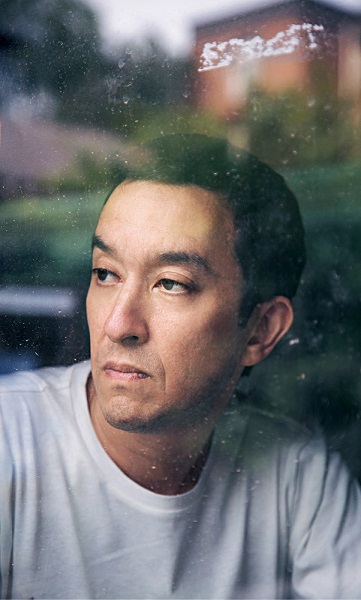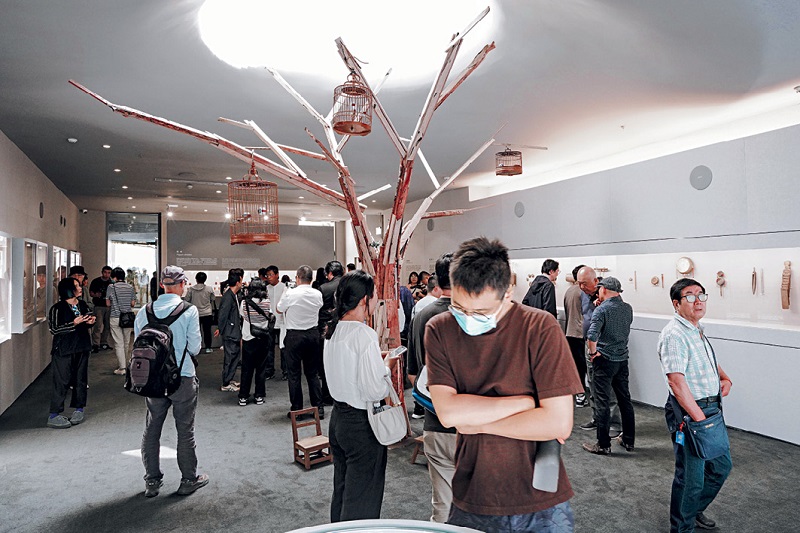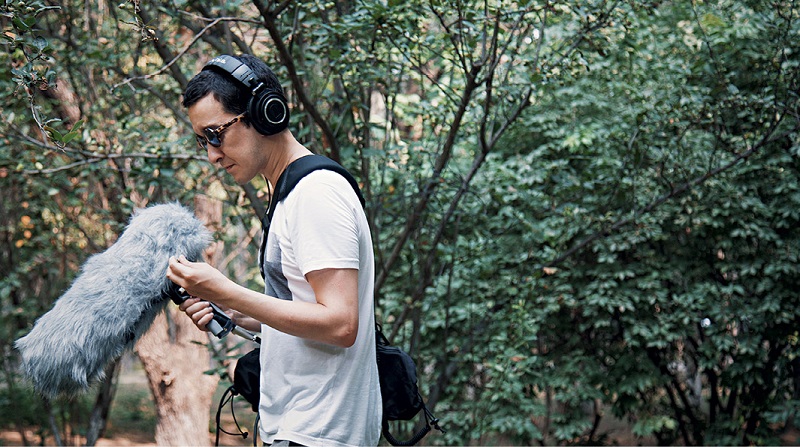Beijing-based British artist and curator Colin Chinnery has spent many years collecting and preserving sounds including pigeon whistles, jingling camel bells, and the cries of street vendors and peddlers in Beijing, among others. These unique soundscapes from the previous century carry the memories of a generation and reflect the changes in history and society.
Chinnery says these sounds are a part of culture, history, urban transformation, and personal memories: “They serve as the background noise of our society, so we often overlook them. However, if we listen to them individually, we will find they hold great significance. They can help us understand how things and times are changing.”

British artist and curator Colin Chinnery.
A Discovery and a New Direction
Chinnery has a special connection with China. Ling Shuhua, the 20th-century writer and painter, was his maternal grandmother, and his maternal grandfather was literary critic Chen Yuan. His father is a British sinologist. Chinnery’s Chinese name, Siyuan, is derived from the phrase “to think about the source while drinking water.”
Chinnery has had a lot of interesting and unusual experiences in Beijing, which he says has given him a great deal of inspiration. He spent part of his childhood in the Chinese capital, where he learned Chinese martial arts, acted in films, formed a band, and also engaged in various other artistic endeavors. Compared to his life in the U.K., Beijing has a completely different facade and has given him greater peace and contentment.
In 2002, he made the decision to move to Beijing and his career as a sound artist took off from there. In 2005, while having tea with several foreign experimental musicians in Dashilan, one of Beijing’s most famous commercial streets, they heard a distinctive sound. The group listened intently, trying to locate the source of this unfamiliar sound. Suddenly Chinnery discovered it was produced by a group of flying pigeons with whistles tied to their tails or legs so that when they fly the whistles emit a buzzing sound. The excited musicians rushed towards the pigeons and located their dovecotes and owners. The owners showed them the whistles tied to the pigeons’ legs, leaving them amazed.
From this experience, Chinnery realized the significance of recording unique Beijing sounds.” In 2013, he was invited to participate in the sound project started by the Shijia Hutong Museum. As he listened to some of the Beijing sounds recorded in 2005 once again, his artistic creativity was aroused, and began to seethe. For some reasons the project had been suspended for four years and later resumed in 2017. Then he decided to engage full-time in sound recording.

Visitors throng the Sounds of Old Beijing exhibition area at the Sound Art Museum in Beijing’s Tongzhou District.
Sounds of Beijing
Sounds carry memories. The calls of street vendors in Beijing evoke memories of the past and have their unique cadence and content. After recording the pigeon whistles, Chinnery felt he should capture the sounds that have been on the edge of disappearing in Beijing as they are a part of traditional Beijing culture and a vibrant presence in urban life. “Chinese people express themselves in their own way, and a lot of that can be found in Beijing culture. For example in the sophisticated street hawking, every different product had its own hawking sound, and everything has its own melody, or its own kind of lyrics or particular rhythms.” Chinnery listened and researched carefully while doing his recordings.
Once Chinnery shared online how he was collecting sounds and why, people started paying attention and his spontaneous act of sound recording gradually became a documentation of Beijing’s culture.
“Most of the traditional culture in the West exists in museums, and the traditional culture that still exists is mostly practiced in concerts or in performances, but it is rarely a natural part of daily life. Whereas in Beijing, one can still experience the traditional culture practiced in daily life,” Chinnery explained his intention to record the unique Beijing sounds. “Things that exist in human memory are a part of the present. For example, if an elderly person remembers something vividly, then the essence of that story exists in the present, within the individual’s emotions and memories. The present, if recorded, will become a city’s documented history.”

Colin Chinnery records sounds outdoors.
From Hutong to Museum
Ten years after Chinnery was invited to participate in the exhibition on Old Beijing held at the Shijia Hutong Museum in Beijing’s Dongcheng District with his recordings of the ancient city in 2013, he took the recordings from the 6-square-meter museum to the sprawling Sound Art Museum in Beijing’s Tongzhou District. That is where the recordings lie preserved today.
This is the first museum in China dedicated to sound art, with an exhibition space of 6,400 square meters. The sounds showcased in the museum are a witness to history, representing a valuable cultural heritage. When people enter the museum, they are greeted by the sounds of old Beijing, including signature pigeon whistles. All the sounds are original recordings without any artificial sound effect. “Sound recording is important because we can pinpoint, identify, and notice sounds that other people don’t, and when we put them in an exhibition setting, in a project, people suddenly realize that there are sounds that they didn’t pay attention to every day.” Chinnery explained the importance of the museum.
These sounds have made a significant contribution to the formation of Beijing’s culture. “All of these are very much connected. I think people know about these different aspects of Beijing culture, but rarely put them together as a kind of phenomenon of Beijing cultural sensitivity,” Chinnery said. The capital’s residents regard these sounds as their cultural heritage, and through preserving these unique and characteristic sounds, historical and cultural legacies are inherited.
As the economy develops nowadays, Chinese people are more willing to take their family to museum exhibits to appreciate various culture, The Sound Art Museum, as an international institution based in Beijing, hopes that its content can travel to many places in China, and even to the rest of the world. “It’s impossible for my personal life to be separated from this museum life. The better this museum does, the better I am,” Chinnery’s life and career are now closely bonded with the sounds of Beijing.